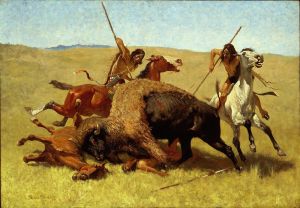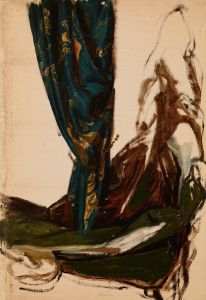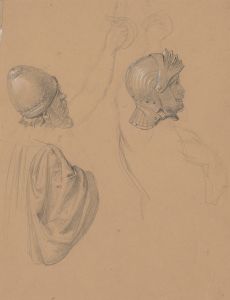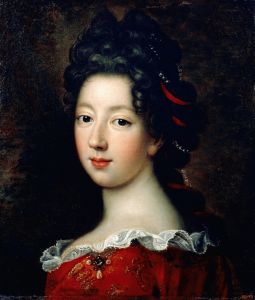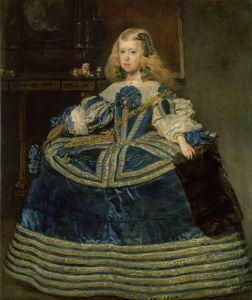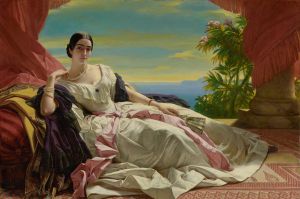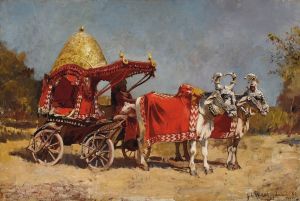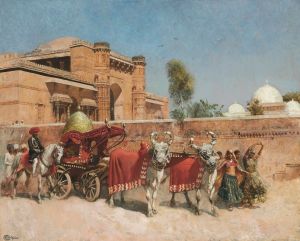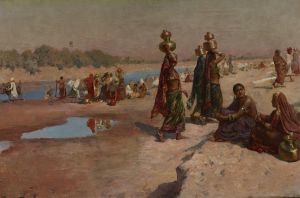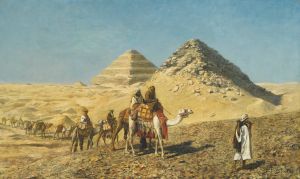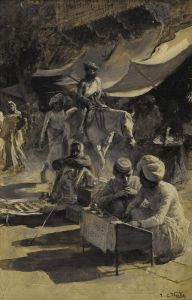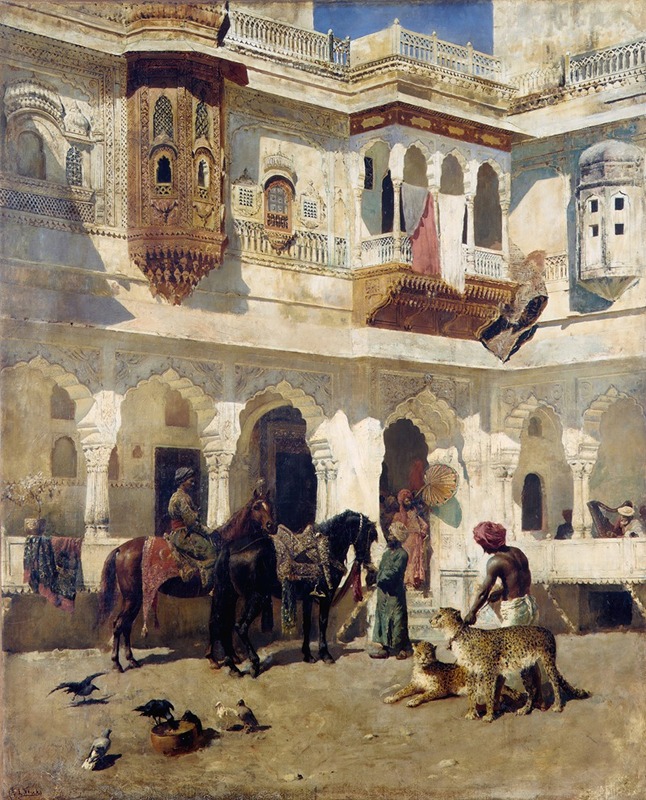
The Rajah Starting on a Hunt
A hand-painted replica of Edwin Lord Weeks’s masterpiece The Rajah Starting on a Hunt, meticulously crafted by professional artists to capture the true essence of the original. Each piece is created with museum-quality canvas and rare mineral pigments, carefully painted by experienced artists with delicate brushstrokes and rich, layered colors to perfectly recreate the texture of the original artwork. Unlike machine-printed reproductions, this hand-painted version brings the painting to life, infused with the artist’s emotions and skill in every stroke. Whether for personal collection or home decoration, it instantly elevates the artistic atmosphere of any space.
"The Rajah Starting on a Hunt" is a painting by the American artist Edwin Lord Weeks, who was renowned for his Orientalist works. Born in Boston in 1849, Weeks became one of the most celebrated American painters of the Orientalist movement, which was characterized by its depiction of the Middle East, South Asia, and North Africa. His works often reflect his extensive travels and deep interest in the cultures and landscapes of these regions.
Edwin Lord Weeks embarked on numerous journeys throughout his life, traveling extensively in Morocco, Egypt, Persia, and India. His travels in India, in particular, left a significant impact on his artistic output. Weeks was fascinated by the vibrant culture, architecture, and daily life of the Indian subcontinent, which became a recurring theme in his paintings.
"The Rajah Starting on a Hunt" is one of Weeks' notable works that captures the essence of Indian royal life during the late 19th century. The painting depicts a scene of a rajah, or Indian prince, preparing to embark on a hunt. This subject matter was a popular theme in Orientalist art, as it offered a glimpse into the exotic and opulent lifestyles of Indian nobility, which fascinated Western audiences.
In the painting, Weeks employs his characteristic attention to detail and vibrant color palette to bring the scene to life. The composition is likely to feature the rajah in elaborate traditional attire, surrounded by attendants and possibly hunting animals such as elephants or horses, which were commonly used in royal hunts. The setting might include architectural elements typical of Indian palaces or landscapes, providing a backdrop that enhances the sense of grandeur and exoticism.
Weeks' technique is marked by his use of light and shadow to create depth and realism, a skill he honed through his academic training and plein air painting practices. His ability to capture the nuances of light in different environments is evident in his works, including "The Rajah Starting on a Hunt," where the interplay of sunlight and shadow adds to the dynamism of the scene.
The painting reflects Weeks' deep appreciation for Indian culture and his desire to portray it with authenticity and respect. His works are often praised for their ethnographic accuracy and artistic merit, making them valuable records of the period's cultural interactions.
Edwin Lord Weeks' contributions to Orientalist art have been recognized in various exhibitions and collections worldwide. His paintings continue to be studied for their artistic qualities and their role in shaping Western perceptions of the East during the 19th century. "The Rajah Starting on a Hunt" remains a testament to Weeks' skill as an artist and his enduring fascination with the rich tapestry of Indian life.





